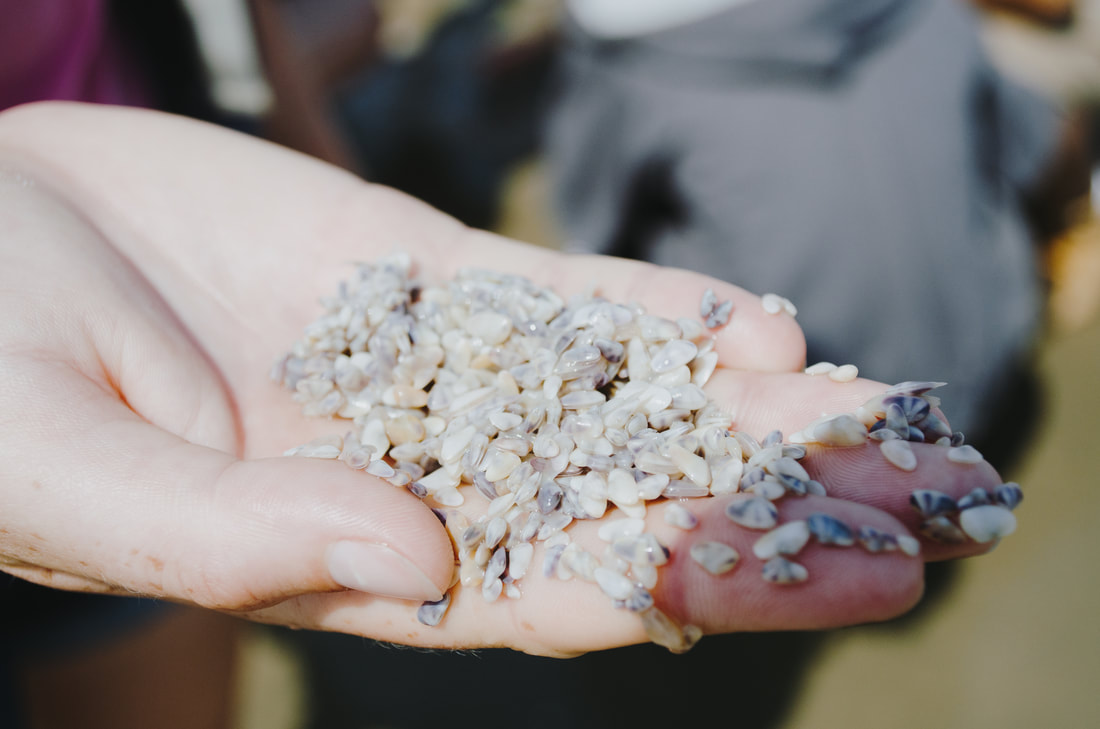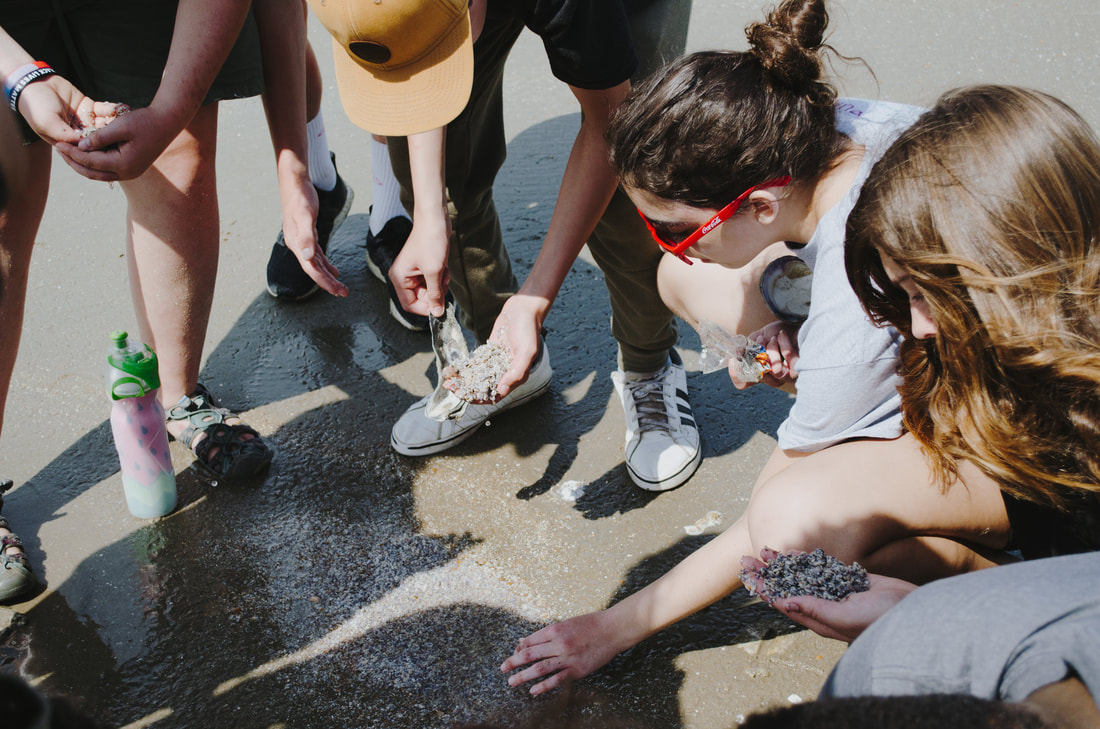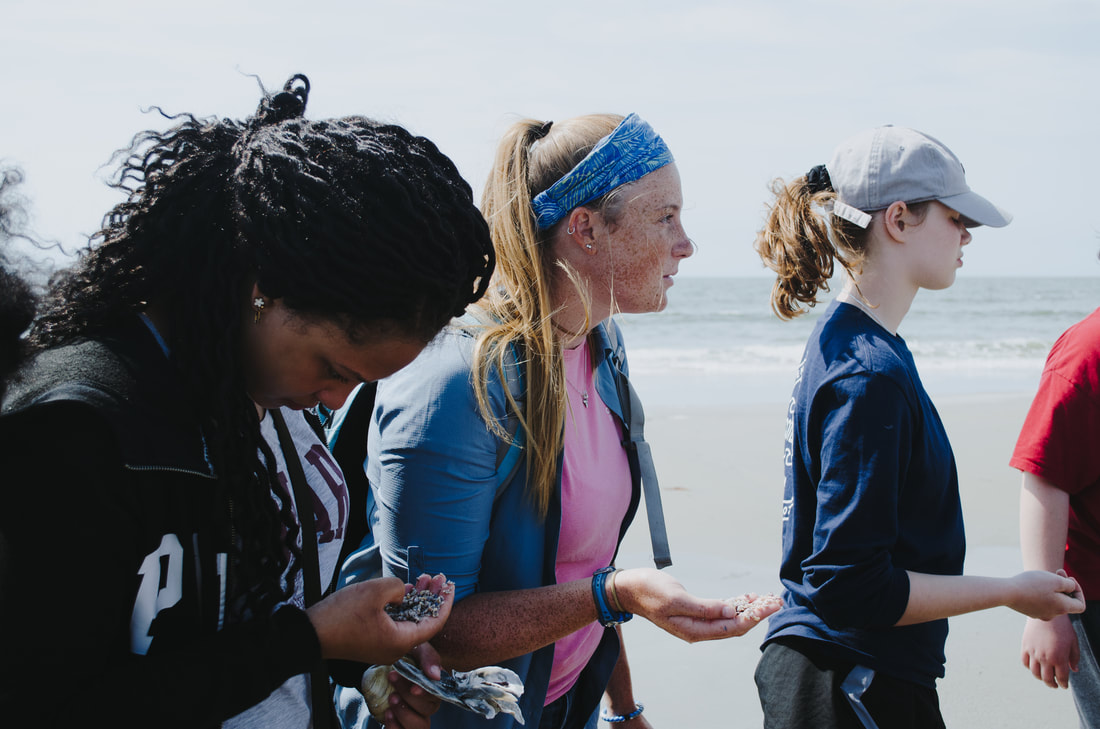|
Have you ever been standing on the shore and notice that, after a wave retreats from your feet, a bunch of small clams wiggle their way into the sand? These clams, called coquina clams, have fascinated students and campers at the field station. They are very small, only about 10 to 25 cm, and can be purple, pink, orange, blue or gray. They are bivalve mollusks which means they have two hinged shells that cover their soft invertebrate body. Coquina clams move up and down the shore by burying themselves in the sand after each wave moves them. This ability to burry themselves is thanks to their foot. This area where they reside is called the swash zone. They move so frequently so they can get the best feeding opportunities. They are filter feeders that use two siphons which look like tubes to filter seawater. One extracts oxygen and collects algae, detritus and phytoplankton. The other gets rid of the waste that is in the water. Fish, crabs and shorebirds feed on coquina clams, and some people even make soup out of them. Coquina clams are an indicator species because they are sensitive to environmental changes. They allow researchers to know whether or not the environment is healthy or not. They can live up to two years in the wild, but without moving water for them to filter, they can only survive three days. The next time you are at the beach, check around your feet to see if any coquina clams are making their way back into the sand when a wave passes!
3 Comments
Alessandra Bertoluzzi
3/21/2021 10:18:29 am
how do the birds eat the clams? I mean as far as getting them out of the shells?
Reply
Francis M. Van Meter
12/23/2022 05:57:25 pm
I think that you meant 10-25 mm instead of 10-25 cm.
Reply
8/11/2023 10:27:13 pm
Hi, I was just enjoying your piece on coquina clams and noticed that your site is not secure. Someone forgot to renew an SSL certificate, clearly. Please tell your IT manager. Or, my company can do it for you, but if you have an IT company under contract, it would just be easier to ask them. - Laurie Head Atkinson
Reply
Leave a Reply. |
About
Everything you need to know about CBFS's educational programs, visiting Chincoteague Island, and more! Categories
All
Archives
January 2019
|
CHINCOTEAGUE BAY FIELD STATION | 34001 Mill Dam Road | Wallops Island, VA 23337 | (757) 824-5636 | [email protected]



 RSS Feed
RSS Feed

